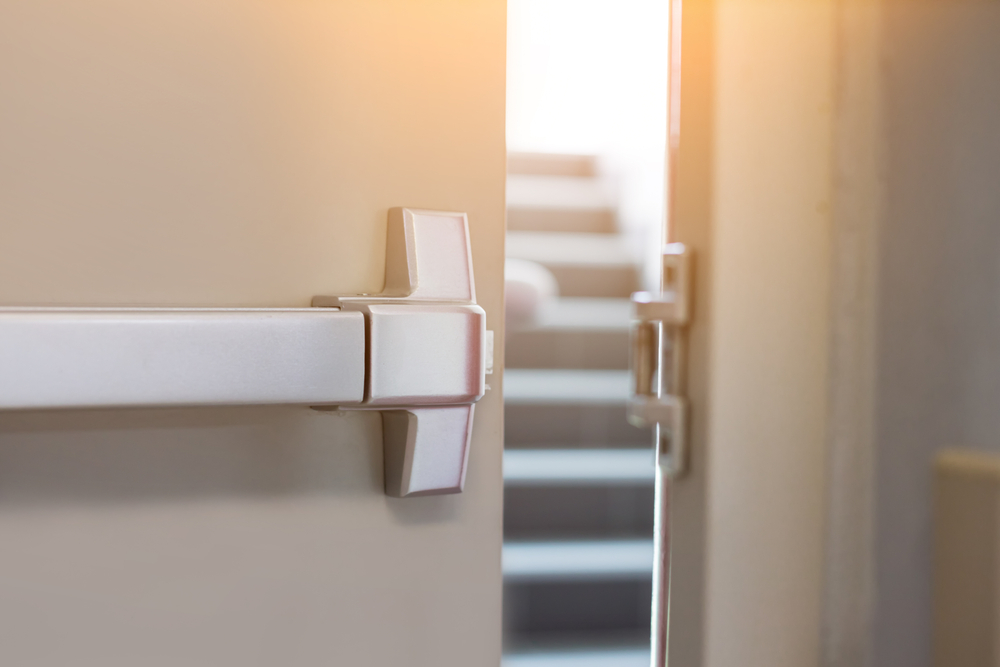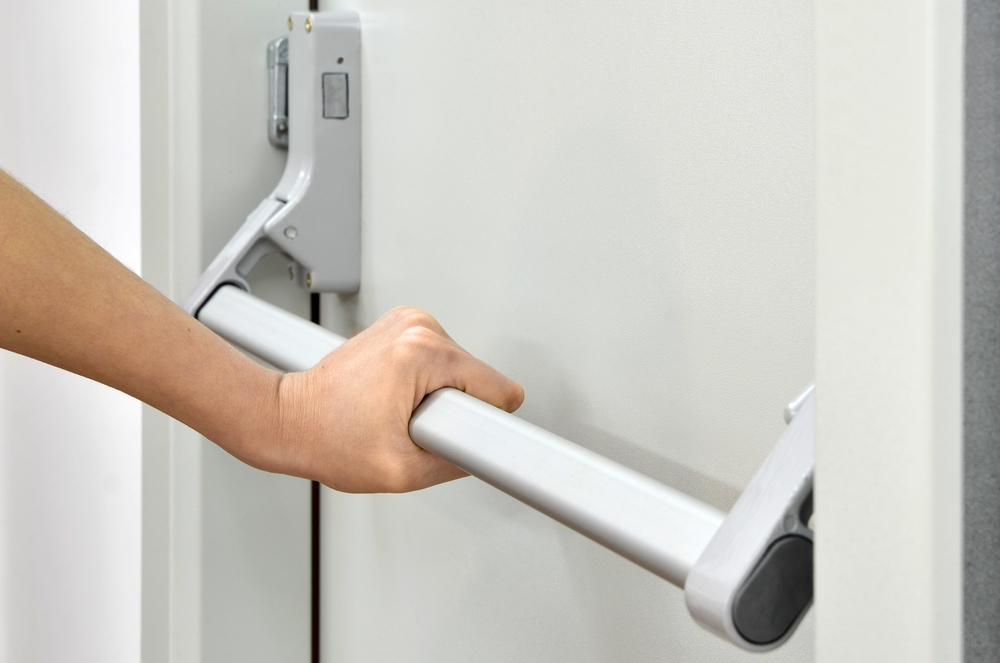People need to be able to quickly and safely exit a facility during an emergency, particularly a fire. There is a lot to consider and you simply can’t designate the building’s main entrance as an emergency escape. The following is the most crucial information concerning emergency exit doors that every building owner should know.
What Are Emergency Exit Doors?
Emergency doors are specially designated doors that also prevent unauthorised entry and exit, usually from commercial or industrial buildings. The national and municipal building code requires these doors. It goes without saying that you need to adhere to the industry rules when changing building locks subject to these laws. Before making modifications or installing new locks on existing emergency doors, there are a few things to consider.
How Do Emergency Exit Doors Work?
In an emergency door, the lock retracts into the door when the push bar is depressed. The door opens to allow the individual to exit safely. Most emergency exit systems have a lock-activated alarm to inform the facility occupants about a particular risk.
The three types of emergency exits from a building are controlled free and delayed exits. A free egress emergency door opens without delay. When it comes to a delayed egress door, you might have to wait for an emergency door to open. A controlled egress is used to prevent specific individuals from leaving a structure. The exit locking with controlled egress works typically one way to grant passage.
Types Of Emergency Exit Doors
Three types of emergency exit doors are available. They include:
1. Fire doors: These lead to tunnels or stairwells that are also fireproof and constructed of fireproof materials. They are safe when escaping a fire, thanks to the fire-resistant steel used in the frame.
2. Exit doors: These are strategically placed for a speedy evacuation when necessary and prominently marked with simple-to-locate green and white EXIT signs. An exit door does not need to be fire-resistant or have a steel frame if it does not lead to a fireproof stairwell or tunnel
3. Path of travel doors: These are the exit or fire doors or the doors that connect to them in the escape tunnels
Emergency Exit Door Hardware: General Guidelines
Emergency doors include unrestricted, delayed, and regulated exits. The following guidelines apply to emergency exit door hardware:
- You must label the locations of the emergency exits on any maps you create of your structures
- Signs should indicate the direction to reach the doors leading to the emergency exits
- People who are elderly or ill, have issues with their hands or arms, or have burns on their hands must have no trouble opening the door
- A person must be able to quickly push open each emergency escape door to carry an injured or unresponsive individual to safety immediately
- Each exit door should only have one lock, and it may not have an internal key lock
- A crash lever handle must be installed if there are many people at the emergency exit door to prevent people from being crushed by a crowd

Benefits Of Using Proper Emergency Exit Door Locks
Let’s examine a few benefits of installing proper locks on emergency doors in offices, businesses, and public facilities where many people move around often.
1). Eliminating The Use Of Keys
You may avoid the problem of losing keys by doing away with them and installing keyless locks on emergency doors. This ensures that anyone can safely evacuate the building during an emergency.
2). Controlling Access
A lot of individuals usually visit facilities such as businesses and companies. You can install emergency doors for specific staff members to access certain areas. A controlled egress is an excellent option for places where you don’t want other people to be aware of the restriction.
How To Choose The Right Emergency Exit Door Locks
There are a few considerations to explore when selecting the finest lock for your emergency exit door. Examples include:
1). Rating
Before selecting the best door lock for your emergency door, you should consider its fire rating. Visit the website of the firm that produces the door lock to learn more about it. You can also speak with an emergency locksmith to determine which door lock is appropriate for your property.
2). Budget
You can get low-cost ordinary fire door locks that provide less security or you can get high-security ones that can be more expensive. By creating a budget, you can select what you are prepared to give up to save a specific amount.
3). Door Size
The size of a door affects both appearance and safety. A lock that doesn’t fit properly in a door looks terrible, but a euro cylinder that protrudes excessively from the hole is a security risk because it is much easier to break. Consider the measurements of your door before settling for a specific lock.
Final Thoughts
How can you enhance the safety of your business while maintaining good condition on your exit doors so your staff and customers can always leave during an emergency? As a professional business owner, you should consider having the right door locks for your emergency exits.
Consult With Our Locksmiths To Secure Your Emergency Exit Doors
It is crucial to have building and fire safety laws. Rules must be strictly adhered to for liability reasons and the general public’s safety. You should speak with a qualified locksmith since some codes are specific and challenging to recall.
Casey Locksmiths is your neighbourhood authority on how to make sure your emergency exit door is fitted with the correct locks. We can supply you with all types of exit locking, including mortise locks and surface-mounted ones. Contact us now to request a pricing estimate from our professionals for the ideal locks for your facility.
Please call us today on 0416 161 332 or leave an enquiry.

